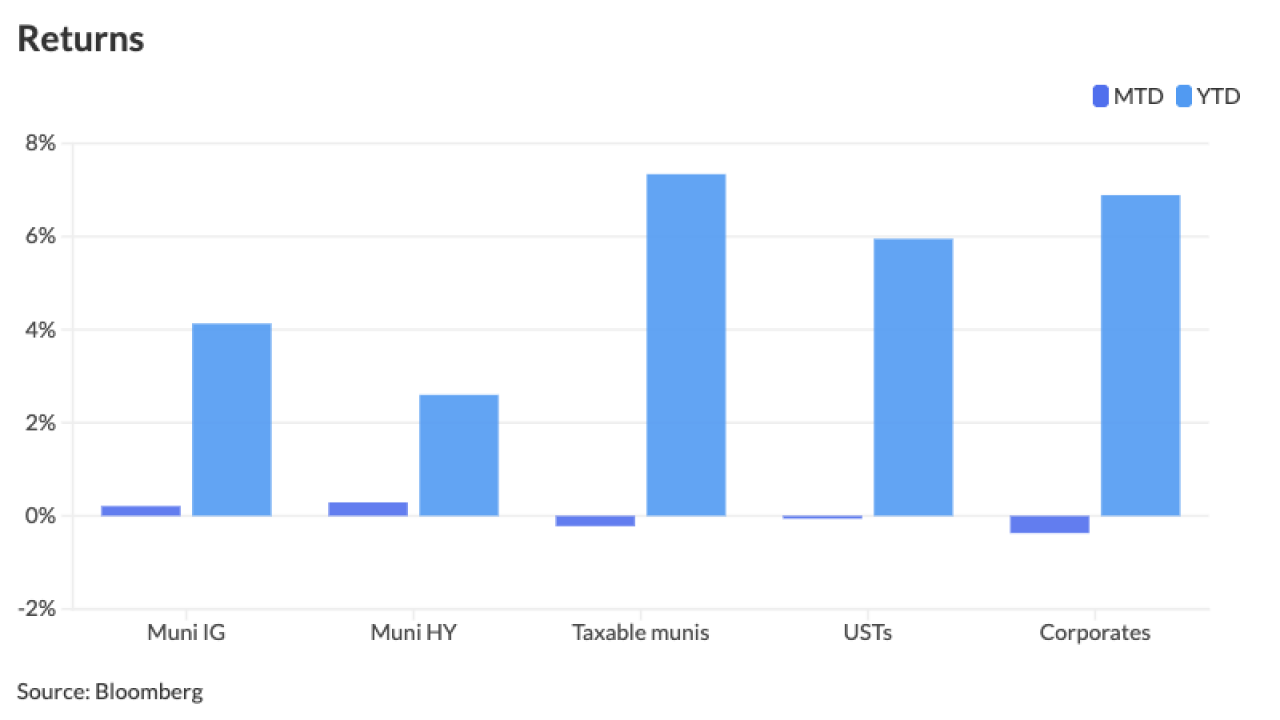Cleveland-based Case Western Reserve University joined the small club of century bond higher education borrowers this week to lock in what university officials said is a still-attractive long-term rate.
The coupon on the Wednesday sale was set at 5.405%, for a 220 basis point spread to the comparable Treasury benchmark. The bullet maturity is due June 1, 2122.
Barclays, JPMorgan, and Wells Fargo Securities were senior managers with Barclays running the books. Prager & Co. LLC was advisor and Thompson Hine was bond counsel.

Use of a 100-year maturity had been on the double-A-minus-rated university’s radar for some time and while this spring's
“While the market has deteriorated a bit over the last few months they still saw this as an opportunity to lock in a favorable 100-year rate,” said TJ Sheehy, a director at Prager. “We think the plus-220 is a strong result and a reflection of the issue being well received by a broad base of investors.”
About $150 million of proceeds will provide funding for a new science & engineering building with the remainder directed to future capital needs. Case Western Reserve is the largest private university in Ohio with 11,000 full-time students.
“The long maturity better aligns with the expected life of the research facility and the university’s long-term strategic goals,” Sheehy said. “The borrowing is part of the university’s long-term strategy of increasing enrollment, diversifying its student body, and expanding and enhancing its already prominent research profile.”
The sale marked the university’s first century bond and first major taxable borrowing and was the latest in a parade of universities to issue 100-year bonds seeking to act this year before rates rise too much so that the long maturity loses its appeal.
Case Western Reserve’s sale came with a corporate CUSIP as opposed to a taxable municipal CUSIP used by many other higher education century bond issuers.
Private universities would need to issue through a municipal issuing authority to use a taxable municipal CUSIP, which adds to issuance costs because of fees and requires more time to get to market because of the approvals required.
Taxable investors often prefer a corporate CUSIP, adding to its appeal although some market participants believe they will overlook that distinction knowing that public universities are expected to use a taxable municipal CUSIP.
Michigan State University, the University of Michigan, and
“The decision was made to pivot to the bonds with the 30-year maturity once we knew we would not be able to issue a century bond within the board's target rate of 4.5% or less,” said Carole Fleck, director, debt management.
Double-A rated, St. Louis-based, Washington University's taxable
Triple-A rated
A handful of recent century bond trades ranged from a 198 bp to 219 bp spread, according to CreditSights.
“We believe that the CWRU deal will benefit from being priced a corporate bond, as the pool of potential buyers is much larger than for the taxable municipal bond market (especially for 100-year bonds),” said John Ceffalio, senior municipal research analyst, and Patrick Luby, senior municipal strategist.
“We think due to the size and the opportunity to add a new name,” the CWRU bonds would price in the plus 200 bp range “and we would expect them to perform in-line with the corporate bond peer group,” Ceffalio and Luby wrote in a weekly new issue report.
Universities' use of
Ahead of the sale, Moody’s Investors Service affirmed Case Western Reserve’s Aa3 rating and stable outlook and S&P Global Ratings affirmed its AA-minus rating and stable outlook.
As part of its financing plans, the school plans a direct purchase placement of $116 million later this summer. The new issuance brings the schools debt load to about $900 million.
"We assessed CWRU's enterprise profile as very strong, characterized by improving enrollment and stable selectivity, but mitigated by weak matriculation rates for the rating," said S&P analyst Jessica Goldman. "We assessed CWRU's financial profile as strong, with positive operations on a full-accrual basis and improved available resources for the rating given recent investment gains."
The strengths are offset by an increased debt burden after the new issues.
The Aa3 rating is underpinned by Case Western Reserve University's excellent brand and strategic position, supporting a solid student market and a sizable research enterprise with potential for further growth given partnerships and planned investments, Moody’s said. The school enjoys total cash and investments of more than $2.3 billion.
“Proposed new debt will materially alter the university's debt profile, significantly increasing leverage and extending the maturity” but “historically very good financial policy and management provide some ability to manage this degree of leverage and debt structure,” Moody’s said.





